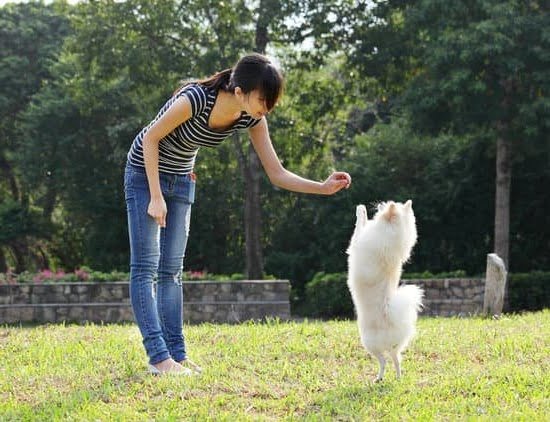Guide dogs play a crucial role in providing assistance and independence to individuals with visual impairments. But have you ever wondered how much time and resources are invested in the training of these remarkable animals?
In this article, we will delve into the extensive process of training guide dogs, from the initial stages as puppies to their specialized training for guiding visually impaired individuals. We will explore the costs, duration, and impact of training on guide dogs, shedding light on the invaluable service they provide.
The process of training a guide dog is a multifaceted endeavor that requires dedication, resources, and specialized expertise. From socialization and basic obedience training to navigating obstacles and maintaining focus in busy environments, the journey of a guide dog encompasses various stages. This intensive training equips them with the skills needed to be reliable companions and guides for individuals with visual impairments.
Throughout this article, we will gain insight into the financial investment required for training guide dogs, including expenses such as specialized trainers, facilities, food, and veterinary care. Additionally, we’ll examine the duration of their training, ongoing support they receive even after being placed with an individual, and the impact of their training on both physical and emotional well-being.
Join us as we uncover the intricate process behind preparing these exceptional animals for their life-changing role as guide dogs.
The Cost of Training a Guide Dog
Training a guide dog is a significant investment, both in terms of time and resources. The cost of training a guide dog encompasses various expenses that contribute to producing highly skilled and reliable animals that can assist individuals with visual impairments. Below is a breakdown of the different expenses involved in training a guide dog:
- Specialized Trainers: Guide dogs are trained by professionals who specialize in working with these unique animals. These trainers possess the expertise and experience necessary to teach guide dogs the specific skills required for assisting individuals with visual impairments.
- Facilities: Training facilities provide an environment where guide dogs can undergo intensive training and socialization. These facilities are equipped with the necessary resources to simulate real-life scenarios and help guide dogs build confidence in various environments.
- Food and Veterinary Care: Proper nutrition and access to veterinary care are crucial for the health and well-being of guide dogs during their training. The cost of high-quality food and medical attention adds to the overall expense of training these animals.
The process of training a guide dog begins at a young age, as puppies go through initial training that forms the foundation for their future role as service animals. This includes socialization, basic obedience training, and exposure to different environments. Once they have mastered these fundamentals, they proceed to receive specialized training tailored specifically for guiding individuals with visual impairments.
Throughout their specialized training, guide dogs learn techniques for navigating obstacles, responding to commands, and maintaining focus even in busy or distracting environments. The level of expertise required in this type of training contributes significantly to the overall cost involved.
Ultimately, understanding how much it takes to train a guide dog sheds light on the comprehensive process that goes into producing highly skilled and reliable service animals dedicated to enhancing the lives of those with visual impairments.
Initial Puppy Training
Training guide dog puppies is a crucial step in the process of preparing them for their future role as a reliable and capable guide to individuals with visual impairments. The initial puppy training phase involves several key components that are essential for shaping these young dogs into proficient and trustworthy guides. Here is a breakdown of the important aspects of initial puppy training:
1. Socialization: Guide dog puppies undergo extensive socialization to ensure they are comfortable and well-adjusted in various environments and around different people and animals. This typically involves exposing them to different sounds, surfaces, and situations to prevent fear or anxiety in unfamiliar settings.
2. Basic Obedience Training: During the initial training phase, guide dog puppies are taught fundamental obedience commands such as sitting, staying, walking on a leash, and coming when called. These foundational skills form the basis for advanced training later on.
3. Exposure to Different Environments: Puppies in training are introduced to a wide range of environments such as busy streets, public transportation, crowded areas, and even indoor settings like shopping malls or offices. This exposure helps them become familiar with navigating diverse surroundings while remaining focused on their handler’s instructions.
It is important to note how much does it take to train a guide dog since the initial stages play a crucial role in setting the foundation for their future responsibilities as guide dogs. With careful attention to socialization, obedience training, and exposure to various environments, guide dog puppies can develop the necessary skills and temperament required for their specialized role.
Specialized Training for Guide Work
Guide dogs undergo specialized training to prepare them for the crucial role of guiding individuals with visual impairments. This training is essential in ensuring that guide dogs can effectively navigate various environments and assist their handlers in everyday tasks. One of the main components of specialized guide work training is teaching the dog how to safely guide a person in different situations, including crossing streets, navigating obstacles, and maneuvering through crowded areas.
During specialized training, guide dogs are also taught specific commands and cues that they need to respond to when guiding their handlers. This includes understanding when to stop at curbs, recognizing overhead obstacles, and maintaining focus despite distractions. Moreover, guide dogs are trained to exhibit calm and controlled behavior even in busy and noisy environments, ensuring that they can effectively assist individuals with visual impairments no matter the circumstances.
The process of specialized training for guide work involves extensive time and resources dedicated to ensuring that each guide dog is fully prepared for their role. This comprehensive training ultimately contributes to the invaluable service that guide dogs provide to individuals with visual impairments.
| Expense | Cost |
|---|---|
| Specialized Trainers | $30,000 – $50,000 per trainer |
| Facilities | $10,000 – $20,000 annually |
| Food | $500 – $1,000 annually per dog |
| Veterinary Care | $1,000 – $2,000 annually per dog |
Length of Training
The length of training for guide dogs can vary depending on several factors, including the breed of the dog and its individual capabilities. On average, it takes approximately 18 to 24 months to fully train a guide dog. However, this timeline can be influenced by the dog’s progress and behavior during training.
Factors Affecting Training Length
Several factors can affect the length of training for guide dogs. The breed of the dog plays a significant role, as some breeds are known for their intelligence and trainability, which may shorten the training period. Additionally, individual capabilities and temperament also impact the duration of training. For instance, some dogs may grasp specific skills quickly, while others may require more time and repetition.
Furthermore, the effectiveness of the initial puppy training and socialization can influence how long it takes to train a guide dog for specialized work. Dogs that have been well-socialized and exposed to various environments during their early development are likely to progress through specialized training more smoothly.
Adaptation to Individual Needs
It’s important to note that each guide dog is paired with an individual who has specific needs and preferences. Therefore, additional time may be required to tailor the dog’s training to meet the unique requirements of its future handler. This customization ensures that the guide dog is proficient in assisting its handler in specific environments or tasks that are essential for their daily routines.
Ongoing Training and Support
Guide dogs play a crucial role in enhancing the independence and mobility of individuals with visual impairments. However, maintaining their skills and ensuring their well-being requires ongoing training and support. After initially being placed with an individual, guide dogs continue to receive reinforcement training to maintain their abilities and adapt to new challenges.
The cost of ongoing training for guide dogs is a significant consideration for organizations involved in their development. This expense covers the salaries of trainers, facilities for training sessions, as well as any additional resources needed to facilitate the process. Ongoing support also includes veterinary care, ensuring that the guide dog remains in good health both physically and emotionally.
Moreover, ongoing training ensures that guide dogs remain sharp, responsive, and adaptable to different environments. Prolonged exposure to various scenarios helps them retain their focus amidst distractions and new obstacles they may encounter during their daily work. The continuous investment in the dog’s development reflects the commitment to providing individuals with visual impairments the highest level of assistance and companionship.
| Ongoing Training Expense | Cost Breakdown |
|---|---|
| Trainers’ Salaries | $10,000 annually |
| Fitness Equipment | $500 per year |
| Veterinary Care | $1,500 per year |
Impact of Training on the Dog
Training a guide dog is not only an extensive process for the organization and the individuals involved but also has a significant impact on the dogs themselves. The rigorous training that guide dogs undergo can have both physical and emotional implications for these intelligent and dedicated animals.
It is essential to understand how the training process affects guide dogs in order to appreciate the remarkable dedication and resilience they demonstrate in their role as invaluable companions to individuals with visual impairments.
Physically, the training of guide dogs involves intensive exercise, specialized techniques, and extensive practice in navigating various environments. This rigorous regimen can take a toll on the dog’s physical health, particularly as they are constantly on their feet, guiding their visually impaired handlers through different terrains and urban settings.
The long hours of work and practice can lead to fatigue and strain on their muscles and joints. Additionally, guide dogs may also face the risk of injuries or accidents while navigating busy streets and sidewalks during training.
In addition to physical strain, the emotional impact of training cannot be overlooked. Guide dogs undergo extensive obedience training, exposure to challenging situations, and constant discipline to ensure their focus and responsiveness while guiding individuals with visual impairments. The demands of this specialized training can be mentally taxing for these intelligent animals.
However, with proper care, support, and positive reinforcement from trainers, guide dogs are able to fulfill their crucial role with unwavering dedication. Ultimately, understanding the impact of training on guide dogs highlights the incredible commitment and resilience displayed by these remarkable animals in providing vital support to individuals with visual impairments.
The Value of Guide Dogs
Guide dogs play a crucial role in the lives of individuals with visual impairments, providing them with independence, safety, and increased mobility. The value of guide dogs goes beyond their ability to physically guide their handlers – they also provide emotional support and companionship. For individuals with visual impairments, having a guide dog means having a trusted partner to navigate the world with confidence. Therefore, understanding the investment in training guide dogs is essential in recognizing their invaluable contribution to society.
Independence and Safety
For individuals with visual impairments, the presence of a well-trained guide dog significantly enhances their sense of independence and safety. Guide dogs are not only trained to safely navigate their handlers through various environments, but they also possess the ability to recognize potential dangers and obstacles, ensuring the safety of their handler. This level of support allows individuals with visual impairments to move about more freely without having to rely on external assistance.
Emotional Support and Companionship
In addition to providing physical guidance, guide dogs also offer emotional support and companionship to their handlers. The bond between a guide dog and its handler is built on trust, mutual respect, and companionship – qualities that are incredibly meaningful for individuals living with visual impairments. This bond can alleviate feelings of isolation and anxiety that may be associated with navigating the world independently.
Improved Quality of Life
The value of guide dogs can be seen in the improved quality of life experienced by individuals with visual impairments. With a guide dog by their side, individuals have greater access to education, employment opportunities, social interactions, and recreational activities. The presence of a well-trained guide dog empowers individuals to lead fuller and more active lives despite their visual impairment.
Understanding the journey involved in training guide dogs sheds light on how much it takes not only financially but also emotionally and physically to produce these remarkable animals that enrich the lives of those they assist.
Conclusion
In conclusion, the training of guide dogs is a significant investment in terms of time, resources, and expertise. From the initial puppy training to specialized guide work and ongoing support, it is clear that a considerable amount of effort goes into preparing these remarkable animals for their important role. The cost of training a guide dog encompasses various expenses, including specialized trainers, facilities, food, and veterinary care.
This begs the question: how much does it take to train a guide dog? The answer lies in recognizing the value that these dogs bring to individuals with visual impairments.
The length and intensity of training illustrate the dedication and commitment required to ensure that guide dogs are well-prepared for their crucial duties. Yet, it is not just about the investment made in training these animals; it is also about understanding the impact they have on the lives of those they assist. As highlighted throughout this article, guide dogs provide invaluable service to individuals with visual impairments, offering them independence, confidence, and companionship.
Ultimately, the significance of training guide dogs cannot be understated. It represents an investment in enhancing the quality of life for individuals who rely on these extraordinary animals as their guides and companions.
The testimonies and personal stories shared by those who have benefitted from the assistance of guide dogs serve as powerful reminders of just how impactful these animals are. In considering all that goes into training a guide dog, it becomes evident that this investment yields immeasurable returns in terms of transforming lives and enriching communities.
Frequently Asked Questions
How Long Does It Take to Train a Guide Dog?
The training period for a guide dog typically ranges from 18 months to two years. This involves extensive socialization, obedience training, and specialized skills such as navigating obstacles and understanding traffic patterns.
Can You Train a Guide Dog Yourself?
Training a guide dog yourself is not recommended unless you have professional experience and expertise in dog training. Guide dog training requires a high level of skill, consistency, and knowledge of the specific tasks and behaviors needed for assistance work.
Can You Make Money Training Guide Dogs?
While there may be opportunities to earn money by training guide dogs, it is typically through employment with an established guide dog organization or program. These organizations often provide professional training and certification, allowing individuals to work as guide dog trainers within their structured programs.
However, it’s not common for individuals to independently make significant income from training guide dogs.

Welcome to the blog! I am a professional dog trainer and have been working with dogs for many years. In this blog, I will be discussing various topics related to dog training, including tips, tricks, and advice. I hope you find this information helpful and informative. Thanks for reading!





